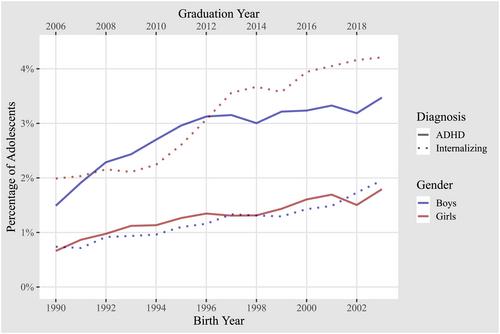The diminishing association between adolescent mental disorders and educational performance from 2006–2019
Abstract
Background
A rising prevalence of adolescent mental disorders in the Western world has been widely reported, raising concerns for adolescent development and well-being. Mental disorders are known to negatively impact educational performance. Yet it remains uncertain whether the relationship between mental disorders and educational outcomes has also changed over time and if the change is more pronounced among high compared to low performing students. The aims of this paper are to (1) describe the change over time in the prevalence of common mental disorders in adolescence; (2) determine whether the change in prevalence of common mental disorders differs between high and low performing students; and (3) assess whether the associations between mental health disorders and educational performance have changed over time.
Methods
To address these issues, this study examines potential shifts in the associations between diagnoses of ADHD and internalizing disorders and educational performance among 843,692 Norwegian students graduating from lower secondary education between 2006 and 2019. We utilize population-wide register data on ADHD and internalizing disorders from primary and specialist care combined with educational outcomes.
Results
Our analysis revealed a marked rise in ADHD prevalence, from 1.0% in 2006 to 2.6% in 2019. Concurrently, diagnoses of internalizing disorders also increased from 1.9% to 4.2%. This increasing trend in diagnoses spanned across all high school grade point average (GPA) categories, thereby not supporting the notion that the rise is predominantly observed among high-performing adolescents. Importantly, the strength of the associations of internalizing disorders and ADHD with GPA diminished significantly over time. For instance, the difference between the average GPA standardized score for boys with and without an ADHD diagnosis shrunk from 1.0 in 2006 to 0.73 in 2019.
Conclusions
We discuss various potential explanations for this observation and suggest that changes in diagnostic thresholds is a contributing factor.



 求助内容:
求助内容: 应助结果提醒方式:
应助结果提醒方式:


